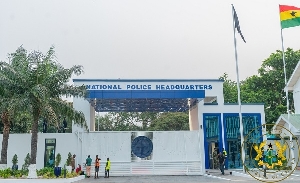The description "Overseas" immediately brings to mind a distant location, often associated with wealth and higher standard of living. Ghana's overseas areas however share very little of its traits with the one that always naturally pops up in the mind. It is indeed remote, but not in distance from its district and regional capitals. Its remoteness has more to do with the absence of transport infrastructure than with geographical distance. The rest of the characteristics of Ghana's "Overseas" are diametrically opposed to those of the alien, but more familiar "overseas".
Ghana's "Overseas" is a place, which gained its name from the remoteness, misery, deprivation and discomfort of life associated with it. The inhabitants of the place have virtually no access to good quality education and health services. The conditions there are harsh, but not one that would deter the Integrated Social Development Centre (ISODEC) from intervening, with a view to mitigating the impact of the harsh conditions of the area.
Driven by the philosophy that "Every life matters, just like any other", and by the believe that educating the girl-child is the surest way to empower tomorrow's woman, ISODEC took a decision in 2000 to extend its Girl-Child Education Project started in Southern Ghana (Bong Ahafo and Ashanti Regions) in 1998 to the West Manprusi, Bongo and Bawku East districts at the onset of the second phase in 2001. In the West Mamprusi district the organization is concentrating on the "Overseas" area, in collaboration with the West Mamprusi District Assembly (WMDA).
Though project activity is focused on education, "there has been no visit" according to Rosemond Kumah, the coordinator of ISODEC's Girl-Child Education programme in Northern Ghana, that has not been confronted with having to carry a dying person or a woman in labour with the project vehicle to the nearest equipped hospital, the Navrongo Government Hospital.
Rosemond says, she has read about, and witnessed disparities in education and health facilities between rural and urban centres, but the case of the 'Overseas" area "is so profound as to shock a dead conscience". Urban schools, she says, have better teachers, more resources and facilities than those of rural areas. At the "overseas" area, the situation has led to low enrolment levels, and participation, with often the girl child being the most disadvantaged.
The "overseas" area has about 40 villages with only 20 primary schools. These include three new ones opened last year and three active Junior Secondary Schools. The area is inaccessible for nearly half of the year due to the waterlogged nature of the land. Most parents live on subsistent farming. Consequently, there are many needy children whose parents cannot provide basic school needs, including school fees. As a result, many of them become wayward, with some traveling down south as farm hands and the girls, as "kayayee". Rosemond explains.
In addition, the tributaries of the White Volta, rivers Kulpuni, Sisili and Prima, surround the area. It would have been only 40 kilometres drive from Walewale, the district capital to 'Overseas' if the Prima River were bridged. The only motorable route linking the overseas with the rest of the district is through Upper East. It is from Walewale through Bolga, Navrongo, Sandema, Fumbesi to "Overseas" (about 156km). Public transport is available once a week - only on market days.
The remoteness of "Overseas" and its level of deprivation has resulted in a situation where very few workers accept postings there, including teachers. Other conditions that are a disincentive to the few devoted teachers who go there, are lack of suitable classroom accommodation, furniture, textbooks and teachers' accommodation. Some teachers who were given the rural incentive package of wireless set and 'ghetto blasters' (Stereo radio / Cassette players) some time ago, returned these items to the District Director of Education and left, after tasting the "overseas" life. As a result, teacher-pupil ratio has widened drastically. Hardly will one find trained teachers there.
From the Poverty Reduction Strategy Paper, the pupil to teacher ratio of primary schools in 1997/98 academic year were: 35 for the national level, 38.34 for Northern Region, 47.6 for Upper East and 38.27 for Upper West Regions. These ratios reflect the unwillingness of teachers to take postings to the three regions and this phenomenon is more pronounced in the "Overseas" area of the West Mamprusi District.
The poor state of the schools, affect enrolment greatly. There are 104 primary schools in the West Mamprusi District, with 13,043 pupils; sadly, only 1,941 come from the overseas areas, an area that has about a third of the district's population. According to a GES 2001/2002 & 2000 Population and Housing Census, While the district enrolment for Junior Secondary Schools was 2,386, that of the Overseas is 115, with only 14 girls enrolled.
Despite the launch of the Free Compulsory and Universal Basic Education (FCUBE) programme in 1996, educational development in Northern Ghana, especially the "Overseas" area leaves much to be desired. How the area will fare under the new Education Strategic Plan, is not clear, for it is not what is stated in a document that matters but how the implementation is facilitated.
One can only hope that with districts having to come out with their own plans, funds through the Fast Track Initiative and other donors will be made available to the districts to carry out their District Education Strategic Plans. If this does not happen, parents may not feel encouraged to send their wards to school. They would rather have their wards stay at home and "be of use to them", as some of them allude to.
Opinions of Monday, 12 July 2004
Columnist: Public Agenda


















